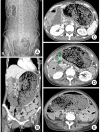Medical Complications of Lung Transplantation
- PMID: 35924543
- PMCID: PMC9358167
- DOI: 10.5090/jcs.22.066
Medical Complications of Lung Transplantation
Abstract
Lung transplantation (LT) is now considered as an effective treatment option for end-stage lung diseases that improves the short and long-term survival rates and quality of life. As increasingly many LT procedures are being performed, the medical complications of LT are also increasing in frequency and emerging as a very important issue for transplant clinicians. Although chronic lung allograft dysfunction and infection are major causes of death after LT, many medical complications, several of which result from immunosuppressive treatment, contribute to increased mortality and morbidity. This article reviews the most frequent and important medical complications of LT, accompanied by a review of the literature and studies from South Korea, including lung allograft rejection, infection, and non-allograft organ systemic complications.
Keywords: Complications; Graft rejection; Immunosuppression therapy; Infections; Lung transplantation; Organ.
Figures











References
-
- Chambers DC, Cherikh WS, Goldfarb SB, et al. The International Thoracic Organ Transplant Registry of the International Society for Heart and Lung Transplantation: thirty-fifth adult lung and heart-lung transplant report-2018; focus theme: multiorgan transplantation. J Heart Lung Transplant. 2018;37:1169–83. doi: 10.1016/j.healun.2018.07.020. - DOI - PubMed
-
- Chambers DC, Yusen RD, Cherikh WS, et al. The Registry of the International Society for Heart and Lung Transplantation: thirty-fourth adult lung and heart-lung transplantation report-2017; focus theme: allograft ischemic time. J Heart Lung Transplant. 2017;36:1047–59. doi: 10.1016/j.healun.2017.07.016. - DOI - PubMed
LinkOut - more resources
Full Text Sources
Research Materials

